
Witnessing manufacturing modernisation since Maruti Udyog began producing cars in collaboration with Suzuki of Japan at Gurgaon in 1984, the Indian auto industry landscape has drastically changed. Opening up to automation with the installation of some of the best robots available at Kuka, ABB and others, the auto industry has left no stone unturned. Such has been the fervor that Tal, a Tata Motors company, launched a robot called Brabo in 2018 to make manufacturing processes involving the application of sealants, picking and placing of parts, welding and vision inspection reliable and easy to perform. Made with an eye on manufacturing process the world over, the Brabo was tested in over 50 work streams and has so far found use in sectors like lighting, aerospace, software, electronics, plastics, education and logistics sectors apart from the auto industry. Coming from an auto maker that installed 300 Kuka robots to automate the assembly of Sumo and Safari at its Pune plant in 2009, the Brabo has seen many rounds of development and application-preparedness since its launch.
Smart manufacturing trend
Highlighting the smart manufacturing trend, the TAL Brabo robot with payloads of two and 10 kilos has also found favour with companies in Europe and other places. Highlighting the prowess of Artificial Intelligence (AI) and Internet of Things (IoT), the robot is an example of the fast-changing manufacturing canvas. Producing about 1,286 engines per day, the Igatpuri plant of Mahindra & Mahindra became India's first carbon-neutral manufacturing facility by adopting smart manufacturing practices under Industry 4.0 in 2019. It invested in energy efficient technologies among others. It invested in recycling of water and other waste. It invested in solar panels to power some of its processes in the plant. An industry source expressed that the rapidly changing business environment the world over is providing impetus to smart manufacturing. It is driving efficiency enhancements and collaborations, he added. Emphasising on efficiency enhancements and collaborative efforts as key smart manufacturing drivers, an industry expert stated that technologies like AI, Industrial Internet of Things (IIoT), automation, big data and 5G are the biggest triggers. They are touching every aspect of manufacturing, from sourcing of raw materials to final inspection, he quipped.

Industry 4.0
As companies like Lincode (it has collaborated with Switzerland-based Global Automotive Alliance), specialising in AI-powered visual inspection with multiple patent-pending defect detection capabilities, find more and more takers in India, the smart manufacturing shift is continuing to take place despite disruptions. It has, in fact, gained speed in India with the race to successfully accomplish BS VI transition in the last few years. A source in the auto industry mentioned that BS VI transition led to manufacturers upping their global ambitions. Vinay Raghunath, Partner and Leader, Automotive Sector, EY India, averred in a report that automotive shop floors are evolving and adopting digital technologies. This, he added, is happening amid challenges like slowdown in demand, non-availability of labour, concerns on health and safety management on the shop floor. Witnessing disruptions relating to ROI among other factors, as Raghunath has informed, the Indian auto industry has been an early adopter of digital manufacturing techniques.
Working to dial higher efficiency, expertise and superior productivity, the Indian auto industry has been overhauling existing assembly lines, erecting new ones and extensively re-evaluating its manufacturing processes and practices in view of smart manufacturing, especially from an automotive value chain point of view. Taking to Industry 4.0, it is leveraging AI and IoT-based manufacturing technologies to automate further – to engage in machine-to-machine communication (M2M) such that there is self-monitoring as well as self-diagnosing. Taking to Industry 4.0 to tackle unanticipated disruptions like the Covid-19 pandemic, which has put well-oiled supply chains and production lines to the test and made it painfully clear that they in their current form are not as agile or resilient as expected, the auto industry is shifting to smart manufacturing in a big way. It is exploring and experimenting; it is finding new ways. It is doing so as it absorbs a significant change in technologies and products like electrification and EVs.
Operator 4.0 and hyper-intelligence
Investing heavily in data analytics infrastructure and capabilities, the auto industry is leveraging opportunities to digitally transform itself. It is defining the boundaries of physics for data-driven model. It is focusing on digital skills development. It is supporting the rise of Operator 4.0. Taking to collaborative robots that coexist with humans in a workplace, it is transforming its ways of manufacturing significantly. Drawing attention to the semi-conductor shortage and how the auto industry was affected despite using only 10 percent of the production, Vipin Sondhi, Managing Director, Ashok Leyland, explained that the rapidly changing consumer psyche is dictating a move to a completely different technological aspect. Emphasising on material technology, he said smart manufacturing is about digitising and achieving cost competitiveness. It was some two to three years ago that the Chennai-based CV maker began implementing smart manufacturing technologies to mitigate challenges. It took to modernising and digitising existing workplaces to address quality issues that are difficult for human beings to detect and acquire made-to-order or mass customisation capabilities. It took to equipping itself with an ability to expand and contract in tandem with the market conditions even as it took to modularisation of product lines.
Automating its cab panel pressing plant at Hosur in 2019, which increased the output by up to 66 percent, Ashok Leyland has been one of the many automotive OEMs globally that are investing in hyper-intelligent automation. A confluence of AI and Robotic Process Automation (RPA), hyper-intelligent automation is redefining not just Industry 4.0 but also Operator 4.0. It is facing challenges like the high initial acquisition cost in terms of tools, but that isn’t worrying players involved like Tata Consultancy Services, Wipro, Mitsubishi Electric Corporation, Catalytic Inc and Infosys Limited among others. Estimated to grow at a CAGR of 18.9 percent as manufacturers strive to reduce energy consumption, up quality and reliability, and control costs through predictability and data-driven unique insights, hyper-intelligent automation is turning out to be yet another finer aspect of smart manufacturing. It is proving to be a big enabler for automating repetitive tasks – to enhance efficiencies, to take to cloud computing to ensure significantly more flexibility and to achieve scalability and the ability to collaborate and reduce costs.

Increasing visibility, predictability and enhancing control on operations and inventory, hyper-intelligent automation is aiding effective decision-making. Supported by development of new technologies such as 5G, which according to a domain expert, promises the need for speed and flexibility along with the capability to eliminate network instability or downtime, hyper-intelligent automation is helping automotive suppliers like Rane Madras Limited to make efficiency, reliability and cost control gains. In 2018, the company adopted automated solutions of Mistubishi Electric Corporation for its new plant in Gujarat. It led to a significant decrease in energy consumption. Aiding smart manufacturing, technologies like hyper-intelligent automation and 5G are helping the auto industry to achieve resilience and immunity against future uncertainties. They are helping to integrate Information Technology (IT) systems used for data-centric computing with Operational Technology (OT) systems – for data readiness and cyber security, and for the development of digital talent. Technologies like hyper-intelligent automation and 5G are helping to develop cross-functional profiles like engineering-manufacturing, manufacturing-maintenance and safety-security.
Tackling disruptions and smart working environment
Looking at productivity gains, emerging competition and risk aversity in the globalised world as per the EY report, the auto industry is taking to smart manufacturing to achieve significant technology transformations like electromobility as well. Apart from the creation of a smart working environment, it is also looking at the use of new materials, new process guidelines and practices. With health also becoming a disruptive factor in recent times, the auto industry is looking at automation in processes like inbound logistics, production planning, sourcing, press shop, body shop, paint shop, quality control and outbound logistics through data visualisation. With sensors and analytics shaping up, the smart working environment in a factory is coming to include AI-based alerts and fully automated work floors. This is increasingly getting compounded by data collection, historical data and high-quality extensive data mining. Helping to guarantee ROI, smart manufacturing is helping to lower the ‘takt’ time. It is also ironically undermining the involvement of humans on the shop floor.
Reducing the cost of computation, storage and connectivity, smart manufacturing is coming of age with plummeting prices of sensors, 3D printers and robots. Empowering cloud-based manufacturing techniques and a gradual increase in the understanding of emerging technologies, smart manufacturing is providing an advantage in terms of the ability to respond to market changes quickly. Taking to develop a new light-duty truck platform with export ambitions and flexibility in terms of left-hand drive and right-hand drive orientation, VE Commercial Vehicles Ltd took to automating its welding line with robots at its Pithampur plant. It also took to robotising its windshield pasting station among others. Experiencing quality, consistency, efficiency and cost gains, the CV maker is also known to have reduced the takt time and energy consumption. As global ambitions and modularity strike in view of the ability to explore new export markets with a cost competitive BS VI product, the auto industry in India is using embedded sensors, RFID and GPS etc. for smart tracking. It is using smart manufacturing technologies to monitor parameters like temperature, pressure, vibration, machine rpm and flow rate.

Smart flexibility
As part of a shift to smart manufacturing, automakers and suppliers are resorting to flexible manufacturing and AR-based solutions to upskill. They are, in view of the technologies like connected vehicles and EVs, stressing on re-aligning their traditional manufacturing setups with that of the future. Emphasising on quality, resource optimisation, streamlining of business processes and adoption of new emerging technologies, they are closely evaluating the advantages of solutions like digital twins and rapid prototyping using additive manufacturing offer. With ROI on their mind, they are embracing smart manufacturing to move up the value chain.
BMW Group India Records Highest-Ever Annual Sales In CY2025
- By MT Bureau
- January 09, 2026
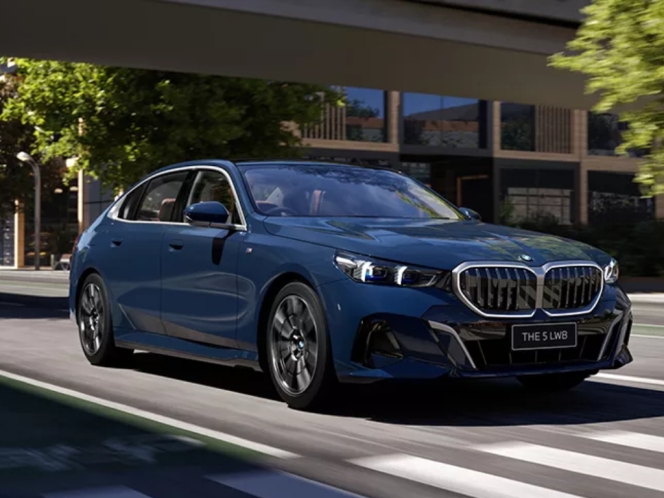
BMW Group India has recorded its highest annual sales to date, delivering 18,001 cars in CY2025, which marks a 14 percent YoY growth.
Within the car portfolio, BMW delivered 17,271 units, while the MINI brand accounted for 730 units. Additionally, BMW Motorrad delivered 5,841 motorcycles.
The company maintained double-digit growth for the fourth consecutive year, with the fourth quarter (October – December) reaching a peak of 6,023 units, a 17 percent increase. During the year, the group launched 20 products across its three brands, including the BMW iX1 Long Wheelbase, the new X3 and the BMW R 1300 GS Adventure motorcycle.
Hardeep Singh Brar, President and CEO, BMW Group India, said, “2025 has been a record-breaking year for BMW Group India with highest-ever sales till date. We crossed the 18,000 units mark in car sales and the fact that we are growing very strongly at 14 percent, above the average growth rate of luxury segment, reflects the strong aspiration and trust that our valued customers have in our brands. Sales are growing across segments, whether it is internal combustion engines or electric vehicles, SAVs or sedan or long wheelbase models. Our lead in luxury electric segment is not only progressing sustainable mobility but also unlocking the potential for increasing the size of luxury car market in India. Going forward, we will keep our focus on what differentiates us – sheer driving pleasure, unparalleled customer centricity and a robust dealer network which delivers JOY at each step of interaction with our customers.”
Electric vehicle (EV) sales saw a 200 percent increase, with 3,753 units delivered. EVs now represent 21 percent of the company's total sales, up from 8 percent in the previous year. The BMW iX1 was the best-selling model in the premium EV segment. To support this growth, the company provides access to over 6,000 charging points through various partnerships and has implemented infrastructure initiatives such as ‘Smart E-Routing’ and ‘Charging Concierge.’
Long Wheelbase (LWB) models grew by 162 percent, totalling 8,608 units, and now comprise 50 percent of BMW’s car sales. The BMW 3 Series remained the highest-selling sedan in its category. In the Sports Activity Vehicle (SAV) segment, sales rose by 22 percent to 10,748 units, with the BMW X1 and X5 leading the volume.
BMW Motorrad's performance was led by the G 310 RR, which saw a 24 percent increase in deliveries. The high-performance motorcycle segment also grew by 7 percent, with demand concentrated on the S 1000 RR and the GS series.
The group currently operates 97 touchpoints across 40 cities under its ‘Retail.NEXT’ concept. Plans for 2026 include the addition of 19 outlets in 18 cities to expand the retail network. Financing for these vehicles is managed through BMW India Financial Services, which offers buy-back schemes and flexible instalment options to facilitate ownership.
Rural Demand Drives PV Retail Sales In CY2025, Barring Construction Equipment All Segments In The Green
- By MT Bureau
- January 07, 2026

The Federation of Automobile Dealers Associations (FADA), the apex body representing automobile dealers in the country, recently released retail sales data for the 2025 calendar year, reporting total registrations of 2,81,61,228 units, which was 7.71 percent higher over the 2,61,45,206 units recorded in 2024.
The apex body stated that 2025 was characterised by two distinct periods, with sales remaining muted from January to August before an upturn from September to December following the implementation of GST 2.0.
In the Passenger Vehicle (PV) segment, annual retail sales reached 44,75,309 units, a growth of 9.70 percent. Data indicated that rural markets outperformed urban areas, with rural PV sales rising by 12.31 percent compared to 8.08 percent in cities.
Two-wheeler (2W) segment saw registrations of 2,02,95,650 units, up 7.24 percent, while the Three-Wheeler (3W) and Commercial Vehicle (CV) sectors grew by 7.21 percent and 6.71 percent respectively. The Tractor segment recorded the highest growth rate at 11.52 percent, totalling 9,96,633 units. Conversely, Construction Equipment (CE) was the only category to decline, falling 6.67 percent to 74,029 units.
For December 2025, total vehicle retail reached 27,10,698 units, a 12.27 percent increase over December 2024. Inventory levels for Passenger Vehicles stood at 30–35 days, while Two-Wheeler inventory was maintained at 20–25 days. FADA noted that the year-end performance was supported by aggressive original equipment manufacturer (OEM) schemes and improved consumer sentiment.
C S Vigneshwar, President, FADA, said, “CY’25 has been a year of resilience and ultimate recovery for the Indian Auto Retail. While the first eight months were overshadowed by high interest rates, inflationary pressures and election-related caution, the final four months - post the introduction of GST 2.0 - acted as a catalyst. The reduction in effective tax rates on vehicles not only made mobility more affordable but also reinvigorated a market that was showing signs of fatigue. Rural India has emerged as the clear driver of growth this year. The double-digit growth in Tractors and the fact that Rural PV sales outpaced Urban by a significant margin confirms that the Bharat story is strengthening. We are seeing a structural shift where personal mobility is becoming a necessity in the hinterlands, supported by better crop realisations and improved infrastructure.”
Looking ahead to January 2026, FADA maintains a cautious outlook due to the high base effect from the previous year and the conclusion of year-end discount cycles. The association expects the market to enter a period of stabilisation as dealers focus on liquidating remaining 2025 stock.
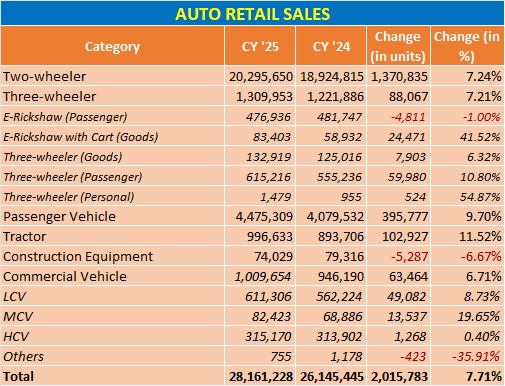
Tarun Garg Takes Charge As Hyundai Motor India’s First Indian MD & CEO
- By MT Bureau
- January 01, 2026
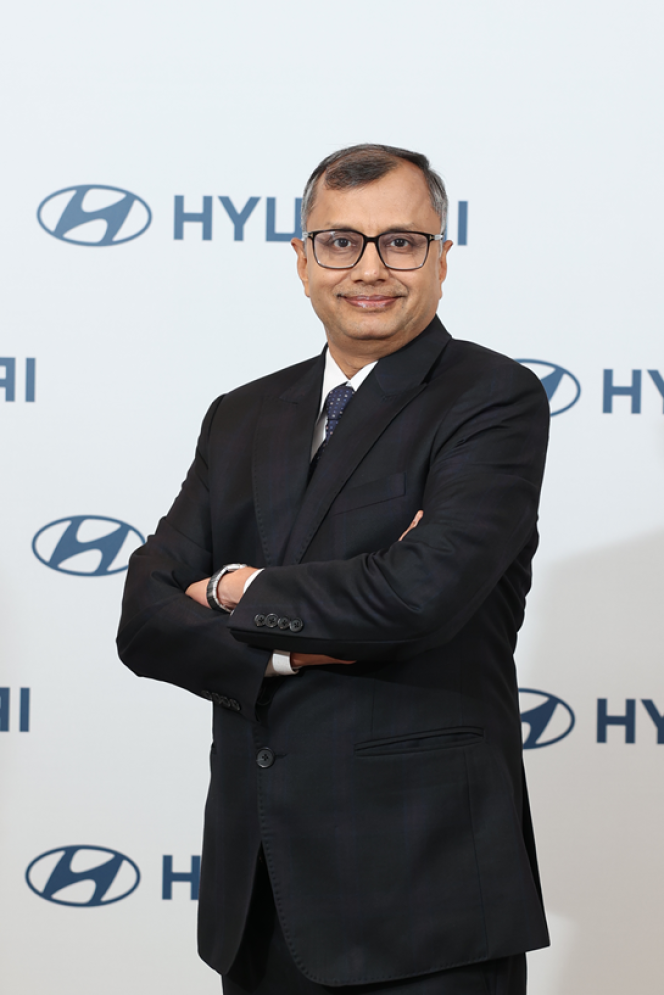
Hyundai Motor India (HMIL), one of the leading passenger vehicle manufacturers, has announced that Tarun Garg has assumed the role of Managing Director and Chief Executive Officer, effective today.
With this, Garg becomes the first Indian national to lead the company since its inception 29 years ago. He comes with over 32 years of experience in the automotive industry and previously served as the Chief Operating Officer of Hyundai Motor India. His appointment comes as the company prepares for its next phase of growth in India.
HMIL has outlined an investment roadmap of INR 450 billion to be implemented by FY 2030. Under Garg’s leadership, the company will focus on four pillars:
- Future-Ready Strategy: Acceleration of electric vehicles, hybrids and connected mobility.
- People and Market Focus: Support for employees and the network of dealers and suppliers.
- Customer-Centric Approach: Building trust and experience across touchpoints.
- Production and Exports: Enhancing indigenisation at plants and positioning HMIL as a hub for exports to emerging markets.
“India’s automotive industry is at an exciting inflection point, driven by innovation, sustainability, and evolving customer aspirations. It is an extraordinary honour to lead Hyundai Motor India at this defining moment in our three-decade long journey. My vision is to build on our strong foundation while accelerating HMIL’s transformation towards sustainable growth, technological leadership, and unmatched customer delight. We will continue to reinforce our commitment to ‘Make in India’ and position HMIL as a global hub for exports. Aligned with Hyundai’s global vision of ‘Progress for Humanity,’ we will strengthen Hyundai’s legacy and create meaningful mobility solutions that not only empower people but also connect communities and enrich lives. The future is ours to build and I am committed to leading HMIL with agility, conviction and purpose,” said Garg.
During his time as Chief Operating Officer, HMIL reported record sales for three years and completed an IPO in 2024. Garg also launched the ‘Samarth by Hyundai’ initiative to improve accessibility for people with disabilities.
Before joining HMIL, Garg held positions at Maruti Suzuki India, including Executive Director of Marketing, Logistics, Parts and Accessories. He is a mechanical engineer from Delhi Technological University and holds an MBA from IIM Lucknow.
Mahindra Bets On Mobility Innovation And Skills As Automotive Outlook Turns Transformative
- By MT Bureau
- December 31, 2025
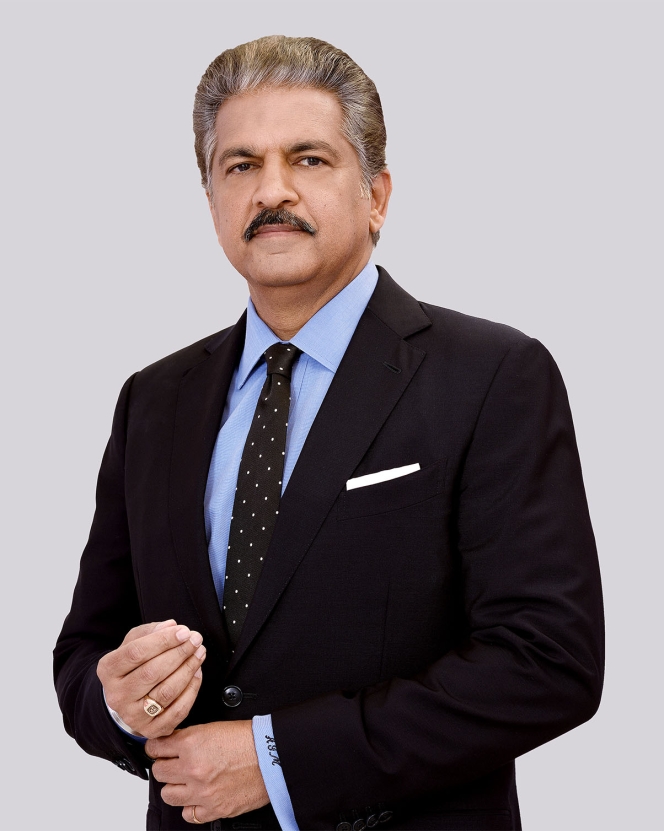
Mahindra Group Chairman Anand Mahindra has struck an upbeat yet reflective note on the automotive industry’s outlook, signalling confidence in demand, technology-led disruption and India’s growing role in shaping the future of mobility. In a year-end address to employees, Mahindra underlined that the Group’s recent performance is less about short-term numbers and more about structural shifts underway in the business and the broader industry.
The Group’s automotive operations stood out in what Mahindra described as a year of ‘market leadership and redefined expectations’.
Mahindra & Mahindra’s SUV portfolio delivered a record market share, consolidating the company’s position in one of India’s most competitive and fast-evolving segments. The performance, he suggested, reflects a sharper understanding of consumer aspirations rather than cyclical tailwinds.
Beyond passenger vehicles, Mahindra’s farm equipment business recorded its highest-ever quarterly market share, while its electric three-wheeler business retained leadership in a crowded and price-sensitive market. Together, these segments underline the Group’s diversified exposure to rural demand, urban mobility and electrification – three pillars that continue to define India’s automotive growth story.
Mahindra framed these achievements as ‘launchpads’, arguing that the Indian automotive industry is entering a phase where execution and innovation matter more than legacy positioning. Once known primarily for rugged, utilitarian products, Mahindra is now increasingly associated with modern design, connected technologies and electric mobility.
“EVs did not just change our portfolio; they changed the conversation,” he said, signalling that electrification has become central to the Group’s identity rather than an adjunct strategy.
This shift mirrors broader trends across the Indian automotive sector, where OEMs are balancing near-term internal combustion engine demand with longer-term bets on electric platforms, software-defined vehicles and advanced manufacturing. Mahindra’s message suggests confidence that Indian players can compete not just on cost, but on technology and relevance.
A significant part of Mahindra’s outlook is shaped by the rapid advance of artificial intelligence and automation. While AI is often seen as a disruptive force for manufacturing jobs, Mahindra offered a contrarian view, particularly relevant for automotive production and supply chains. He argued that AI will act as an ‘accelerator, not a threat’, enhancing the value of hands-on skills on the shop floor.
According to Mahindra, technicians, machinists and operators who can work alongside intelligent systems will become premium assets. In an automotive context, this has implications for everything from smart factories and predictive maintenance to quality control and EV assembly.
“AI can turn blue collar into gold,” he remarked, highlighting a future where digitally enabled manufacturing skills command higher productivity, dignity and income.
The Group is backing this view with investments in skilling and education. Mahindra highlighted its involvement with vocational training initiatives and engineering talent development, positioning skills as a strategic enabler for the next phase of industrial growth. This emphasis also aligns with global shifts in talent mobility, as tighter visa regimes in the West potentially create opportunities for India to retain and attract high-quality engineering and technology talent.
For the automotive industry, this could translate into stronger domestic R&D capabilities, deeper supplier ecosystems and global mandates being executed from India. Mahindra argued that the country has an opportunity to move from being a global ‘back office’ to a global ‘think tank’, especially as Global Capability Centres expand their footprint.
Looking ahead, Mahindra acknowledged that the external environment remains uncertain, shaped by geopolitical volatility, technological disruption and evolving consumer behaviour. However, he positioned uncertainty as a test of resilience rather than a deterrent. With sharper capabilities in mobility, electrification and manufacturing skills, the Group believes it is well placed to chart new growth paths.
For India’s automotive industry, the message is clear: leadership in the next decade will belong to companies that combine product innovation with talent development and technological confidence.
As Mahindra put it, “the future belongs to those who build it” — a sentiment that resonates strongly as the sector navigates its most significant transformation in decades.



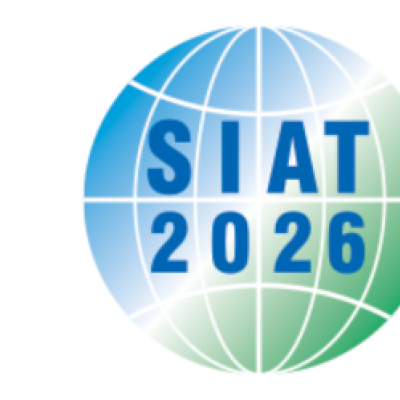
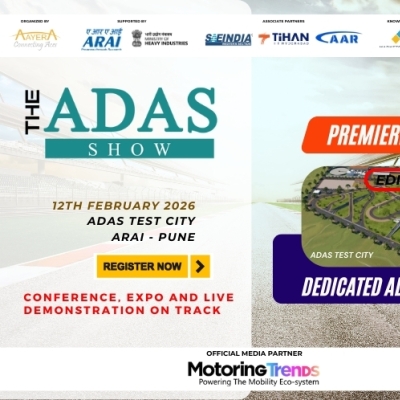
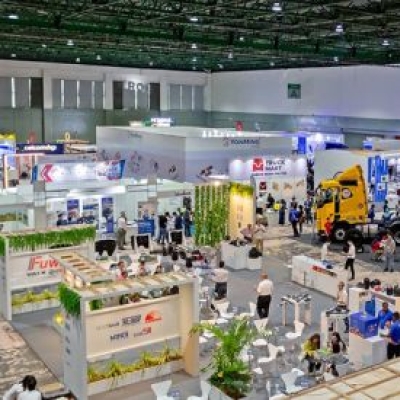
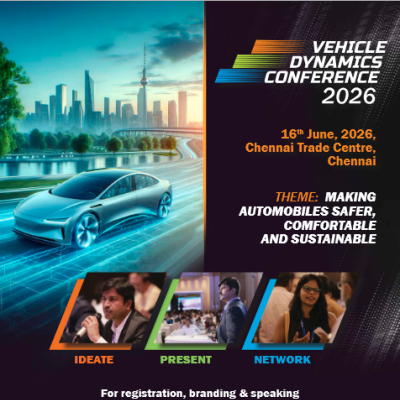
Comments (0)
ADD COMMENT